
Used Mitsubishi Delica D5 review
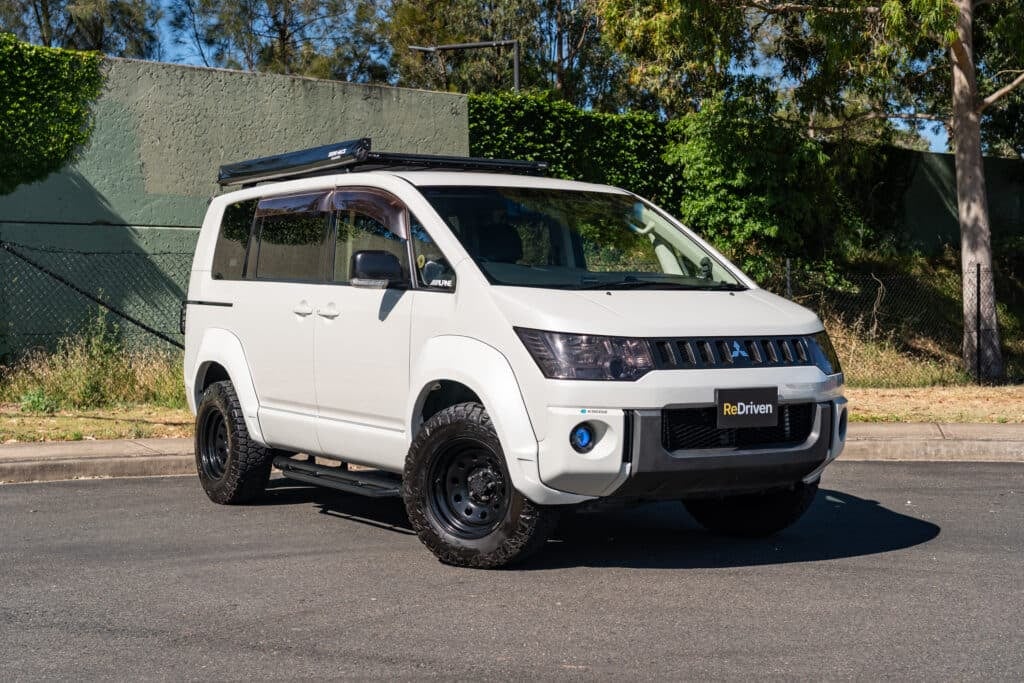
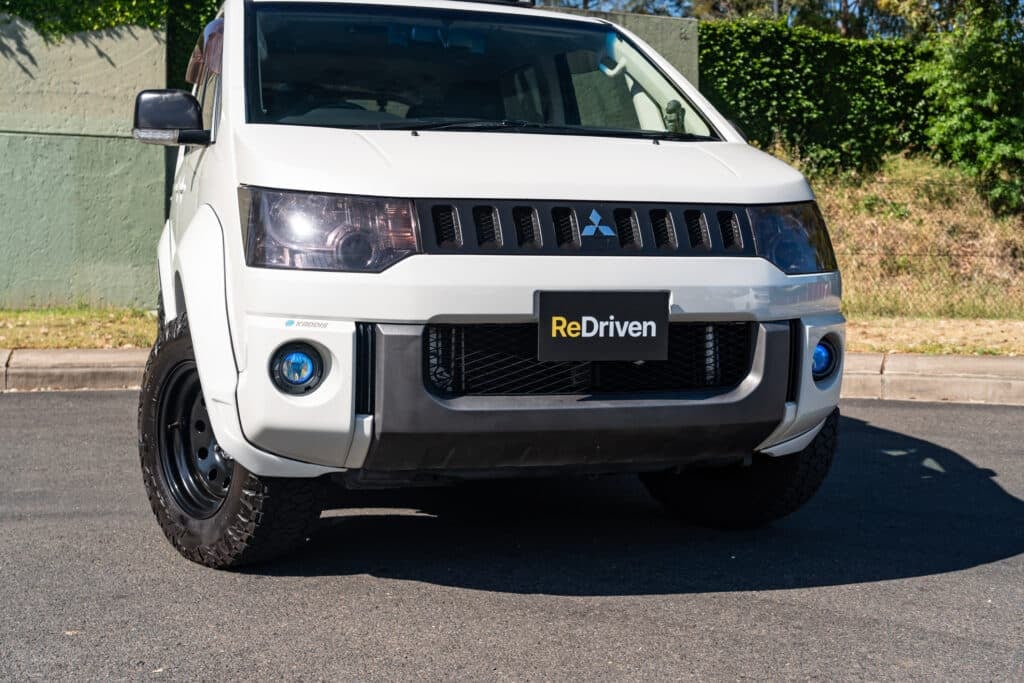
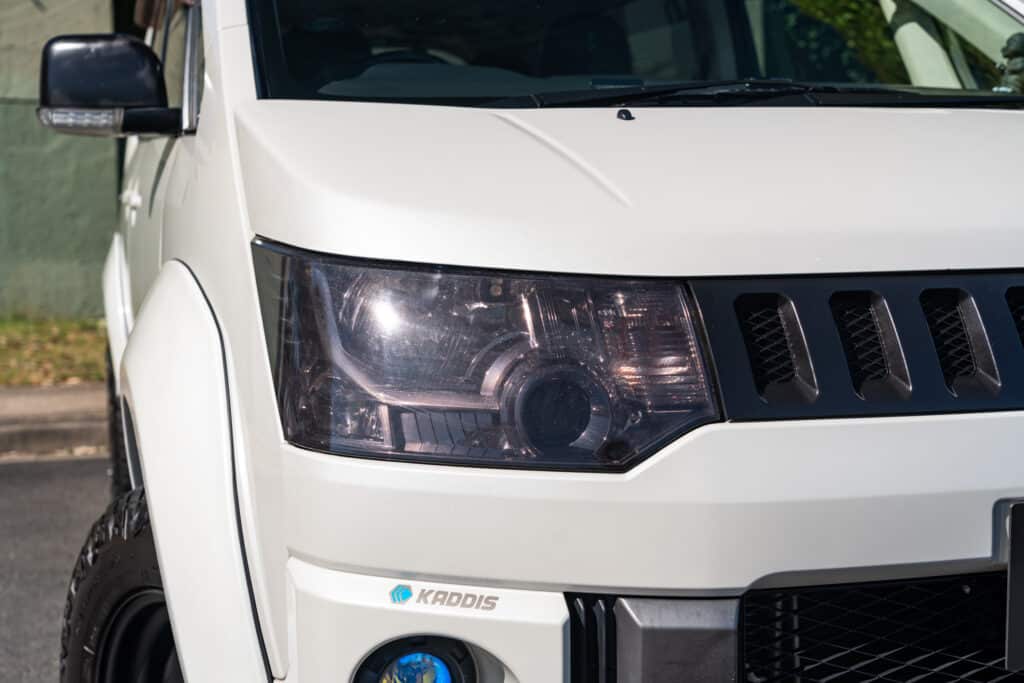
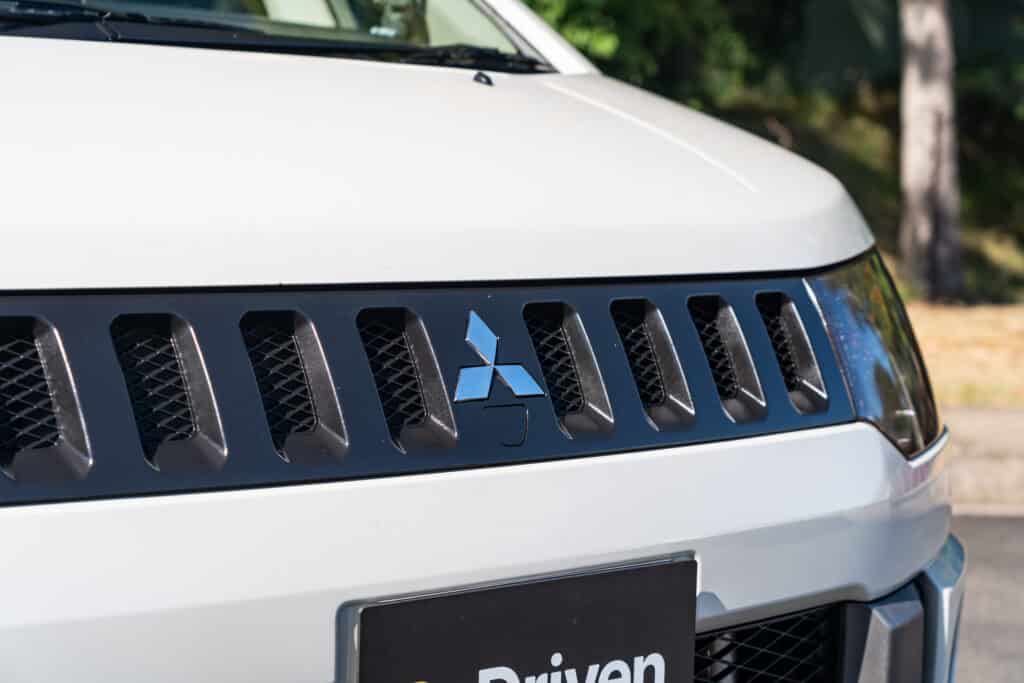
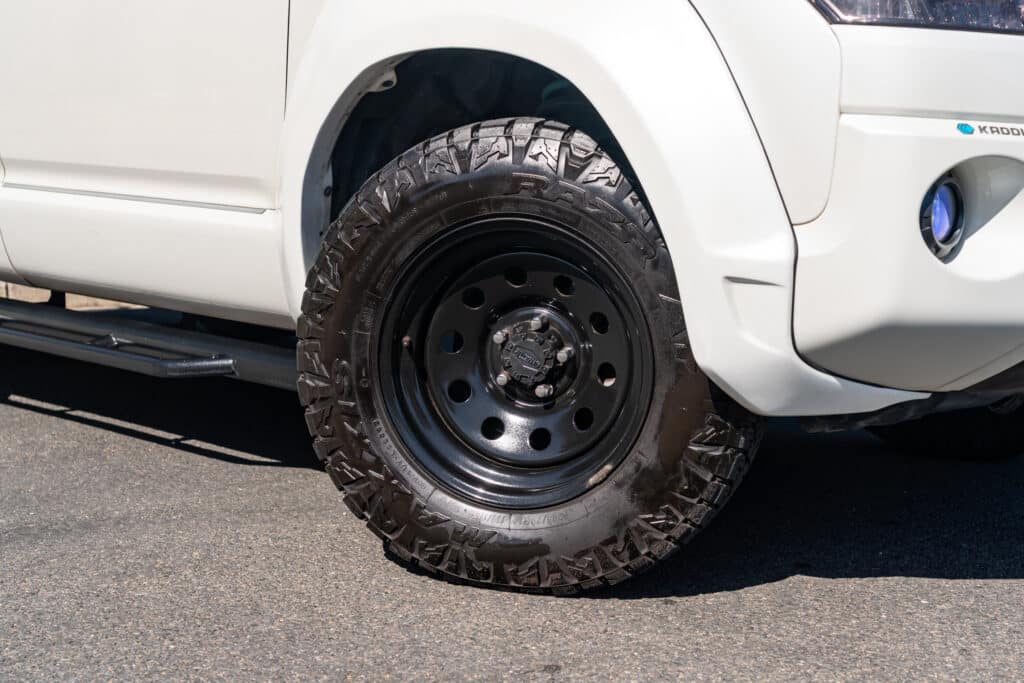
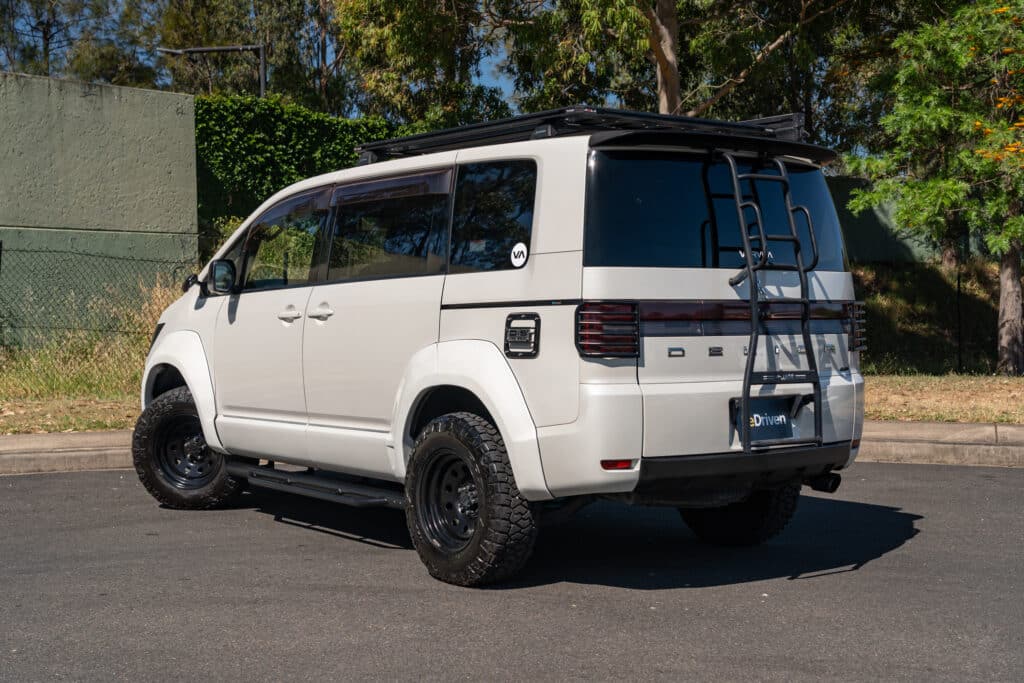
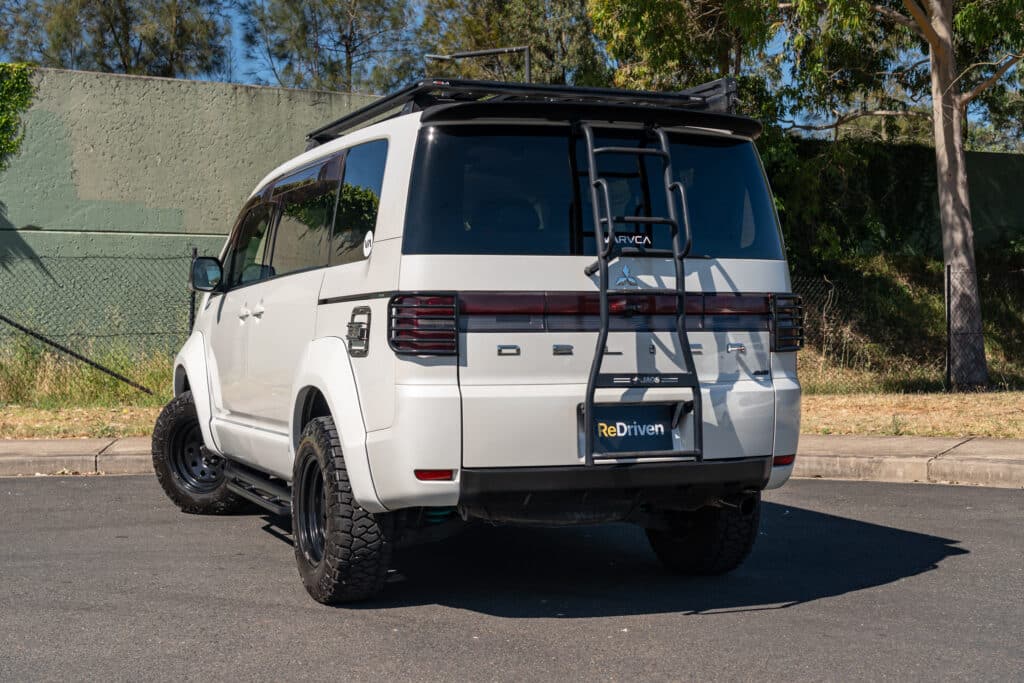
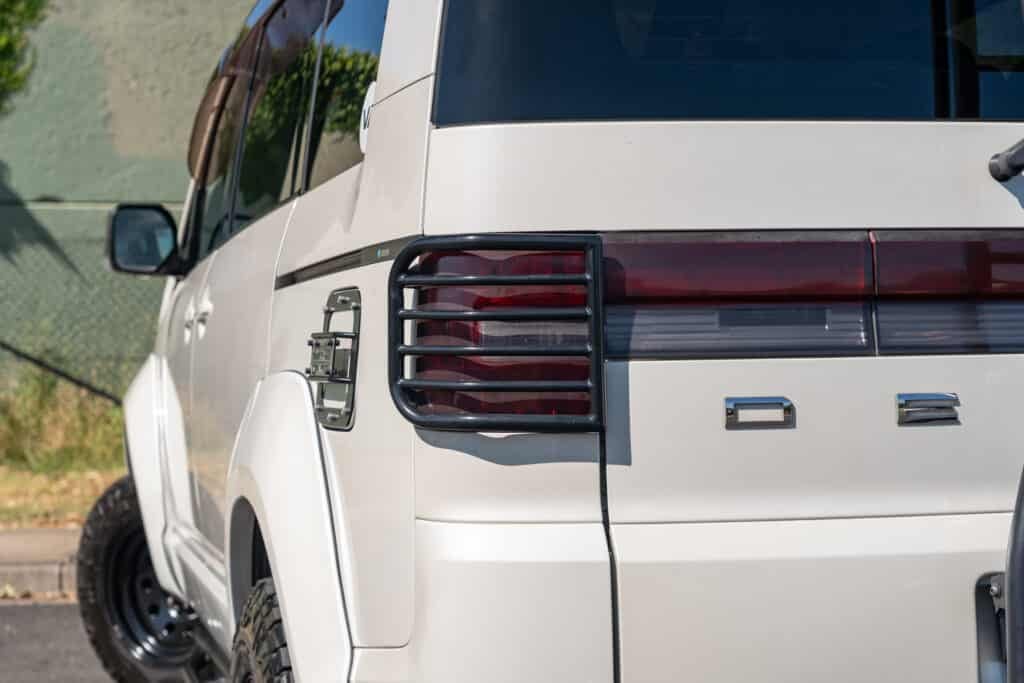
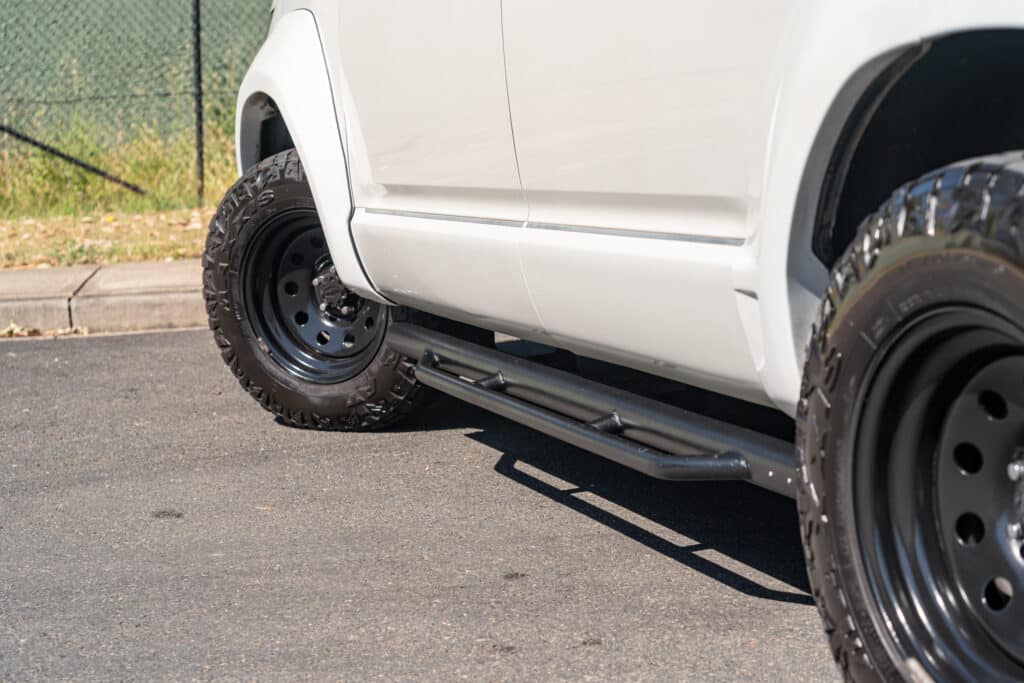



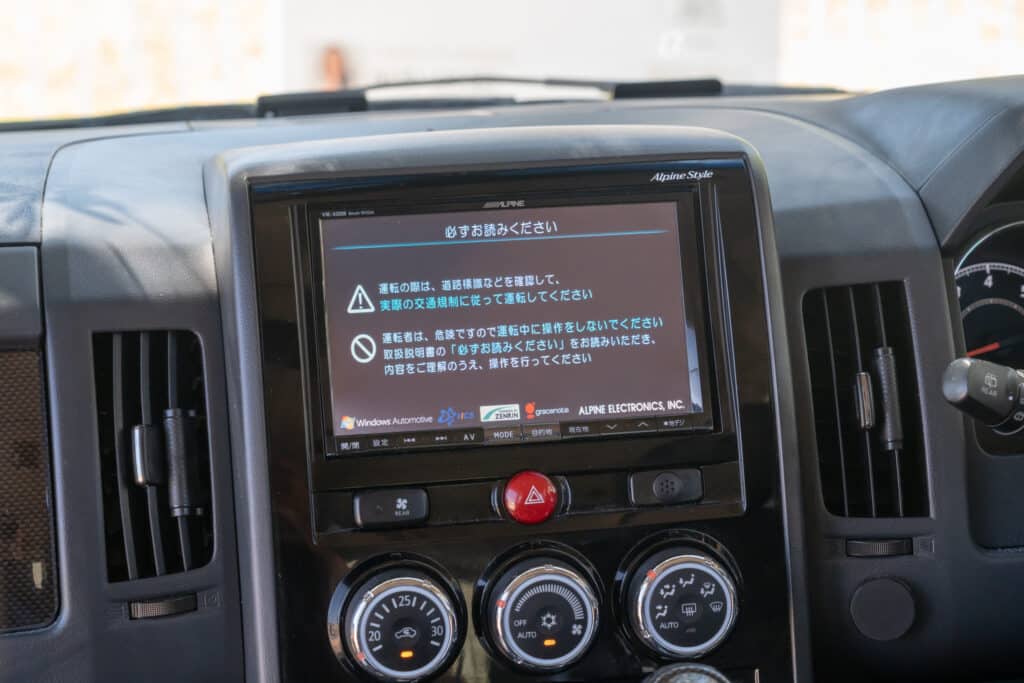
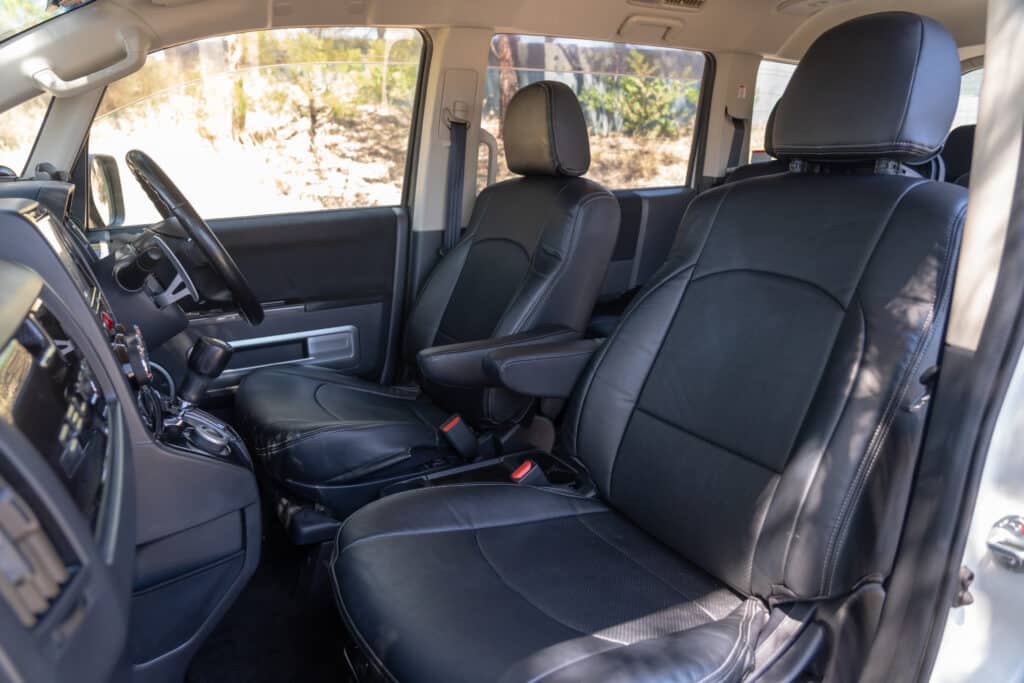
Dislikes
Stuff you should know
First debuting in 1968, the Mitsubishi Delica (an abbreviation of ‘Delivery Car’ [Deli-Ca]) are a series of vans and pickups made under the Japanese brand. Compared to other MPVs, the Delica stands out by offering an elevated ride height/driving position, along with Four Wheel Drive as standard – giving it a surprising amount of off-road ability and utilitarian character than other people movers.
The latest iteration is known as the Delica ‘D5’ and was first introduced in 2007, and has remained largely the same design-wise throughout all of its production years. Aside from a minor update in 2015 that updated the cabin equipment and tech features, the most significant update for the D5 came in 2019, which saw Mitsubishi significantly update the front subframe, suspension settings, brought improved active safety features/tech, as well as refresh the appearance to incorporate Mitsubishi’s latest ‘”Dynamic Shield” design language – bringing an updated front fascia with a more prominent chrome grille, slimmer front LED headlights, and inside, a wider infotainment screen and different automatic gear shifter design.
The Delica D5 was primarily sold in its native market of Japan, but aside from some select markets in Asia, like Hong Kong and Singapore (where MPVs from Japanese car brands are popular choices), the ones available locally are most likely going to be grey imports originally made for the Japanese market that weren’t originally sold through your local Mitsubishi dealers.
The D5 initially came equipped with a range of four-cylinder petrol engines, before gaining a four-cylinder turbodiesel engine from 2013 onwards. All feature an automatic transmission of some form – early models featured (unfortunately) a continuously variable transmission, with later models getting a six/eight-speed automatic transmission. Power is sent to the front or all four wheels through Mitsubishi’s ‘AWC’ all-wheel drive system.
Rivals of the Delica D5 include a mix of Japanese MPVs – the Nissan Elgrand, Toyota Vellfire/Alphard, Estima (or as they’re known in Australia, the Tarago), to commercial-van-turned people carriers from European brands like the Mercedes-Benz V-Class, Sprinter, Volkswagen Crafter/Transporter, as well as a few outliers, like the Kia Carnival.
Also, fun fact – yet again exclusive to Japan, the Delica has a miniature version, aka ‘kei-car’ variant known as the Mitsubishi Delica Mini. Think the same combination of an MPV body and a lifted, off-roader-like chassis, but all shrunken down, and a pretty quirky car, we think.
But say you are in the market for a practical family mover – should the Delica D5 be on your list?
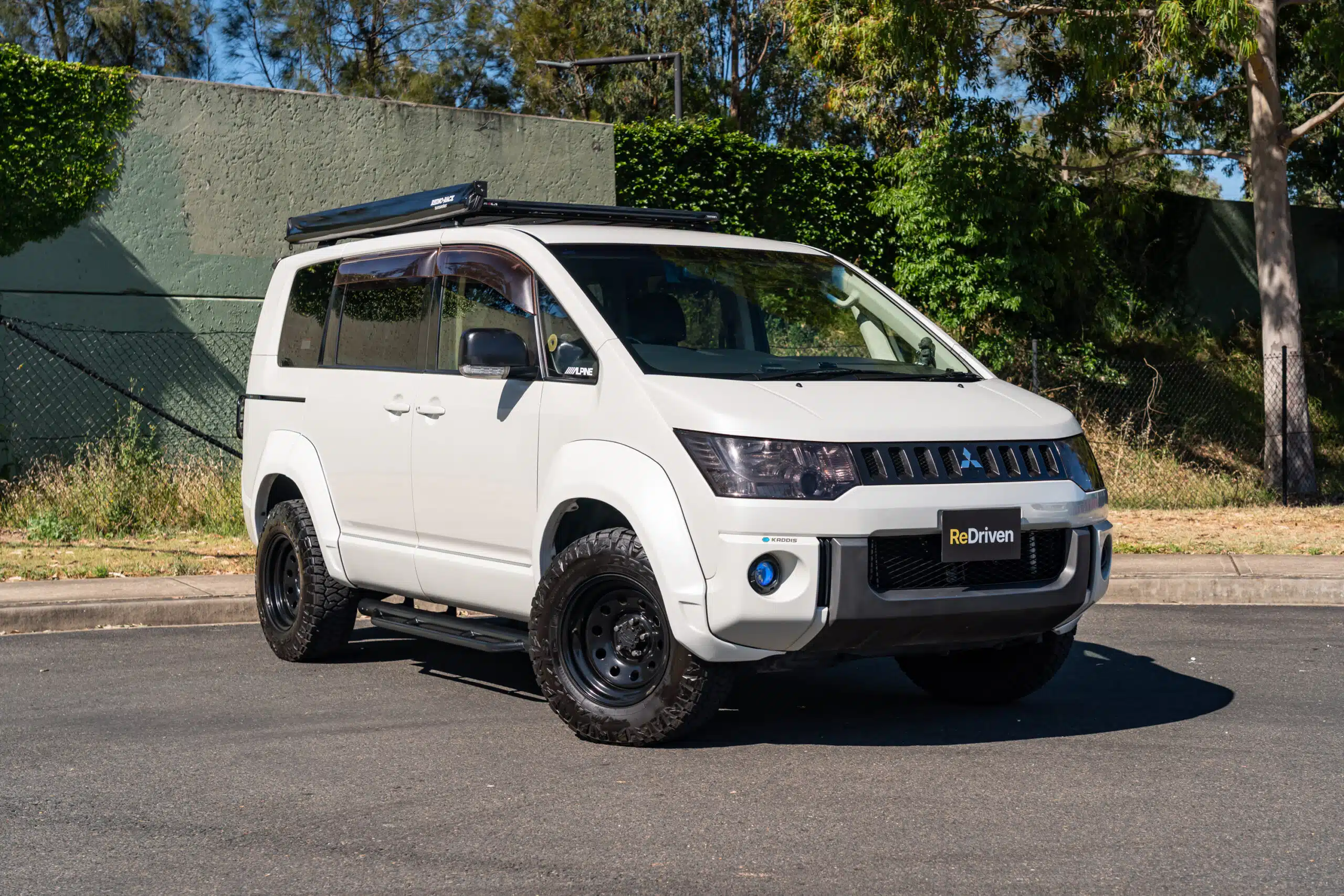
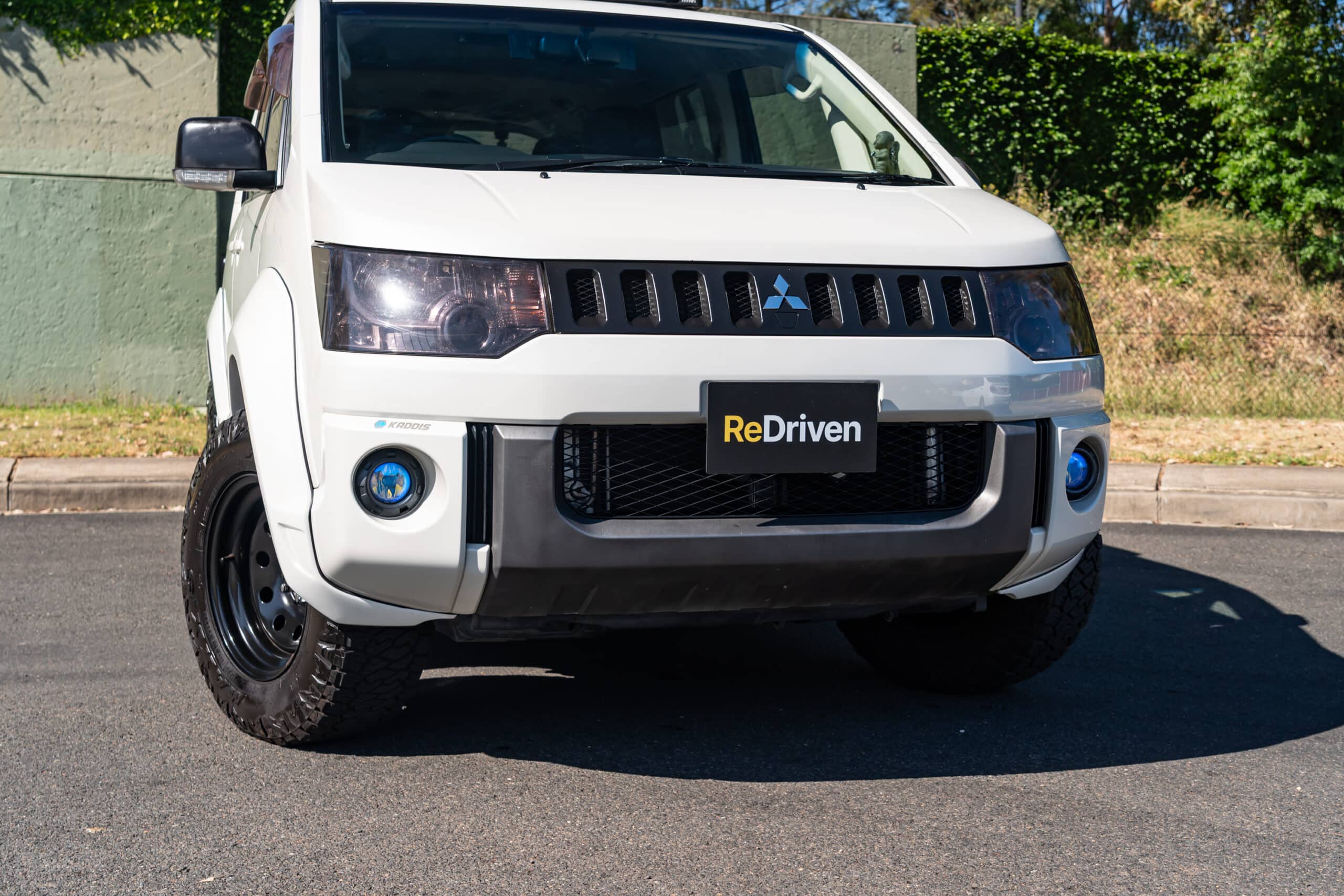

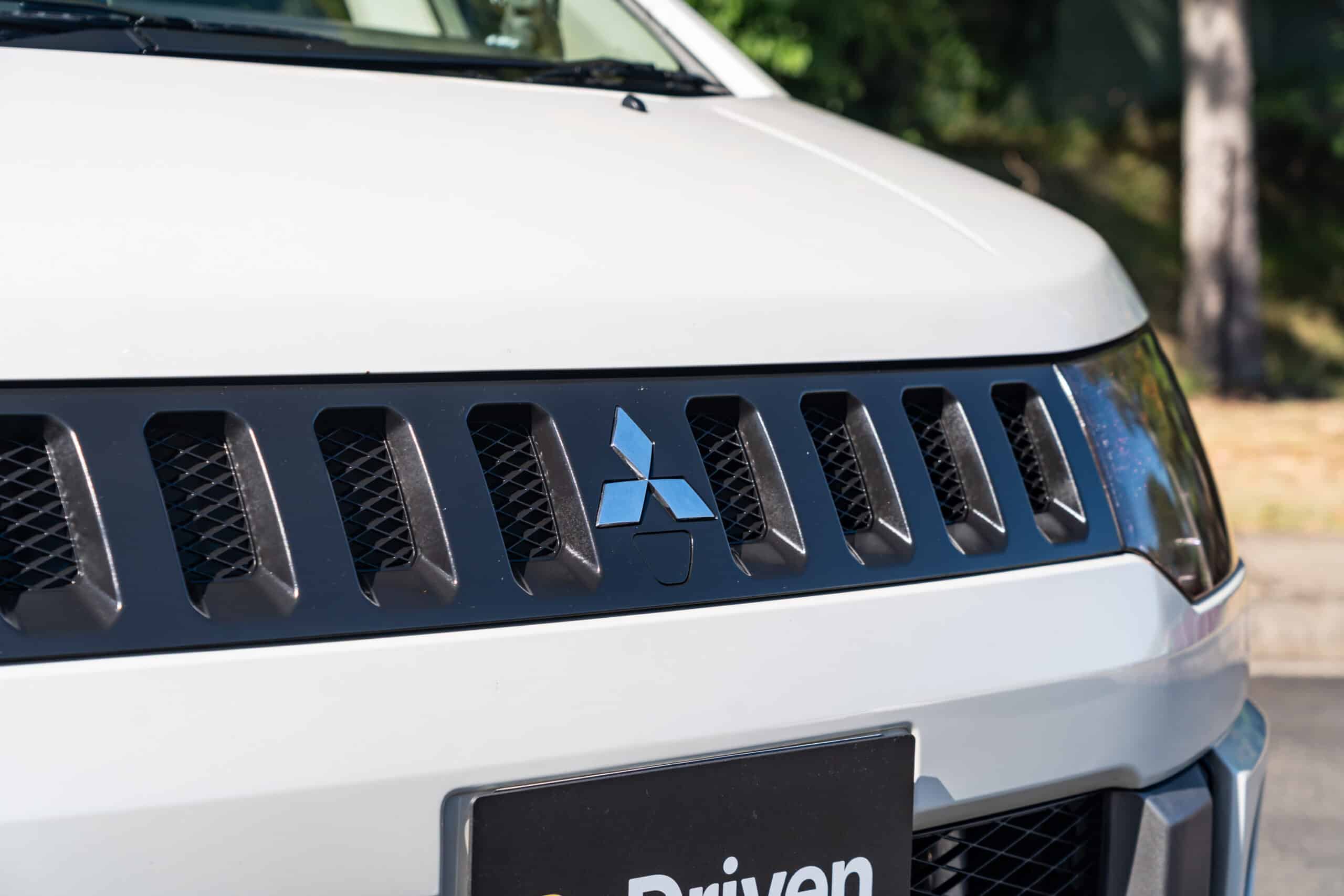
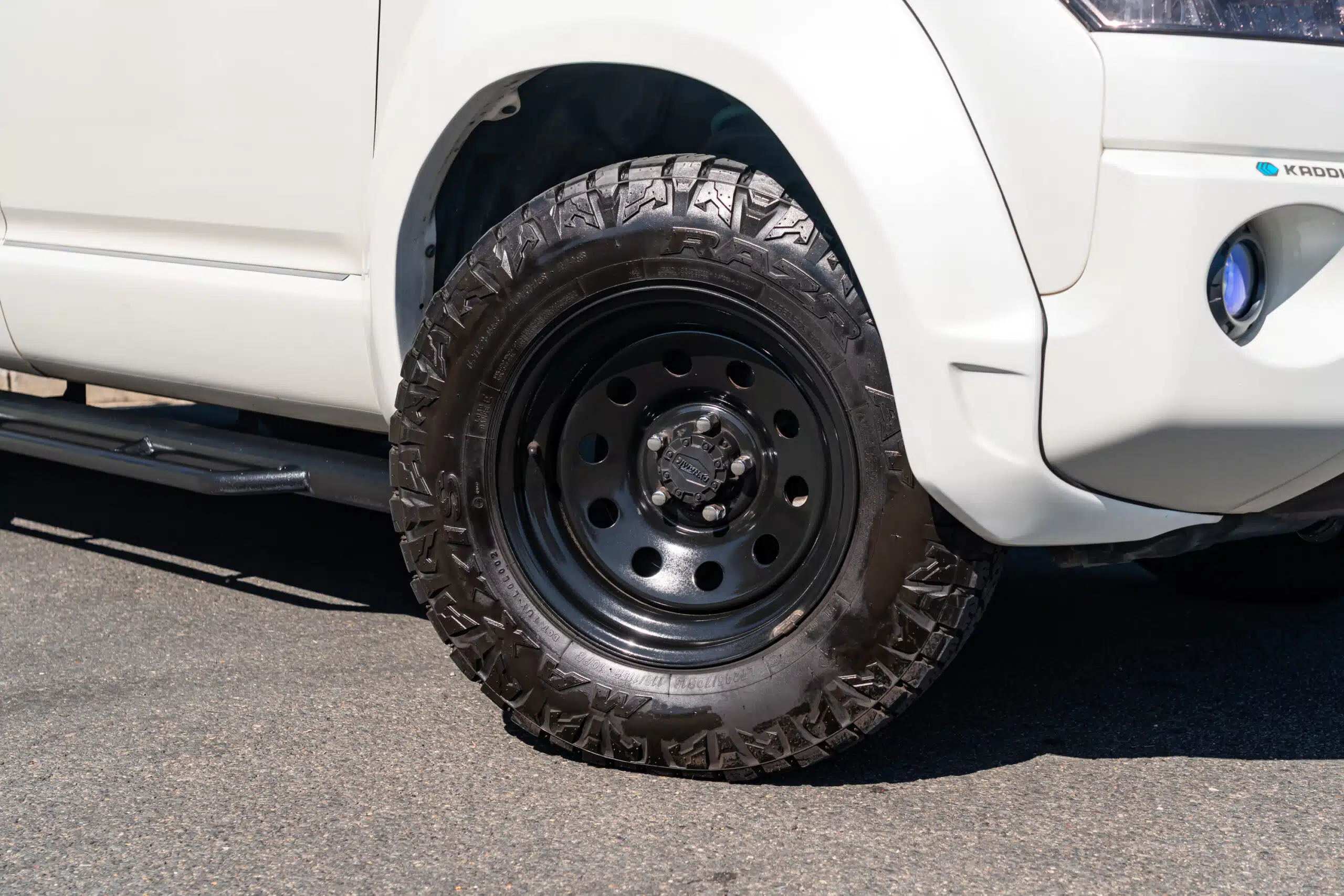
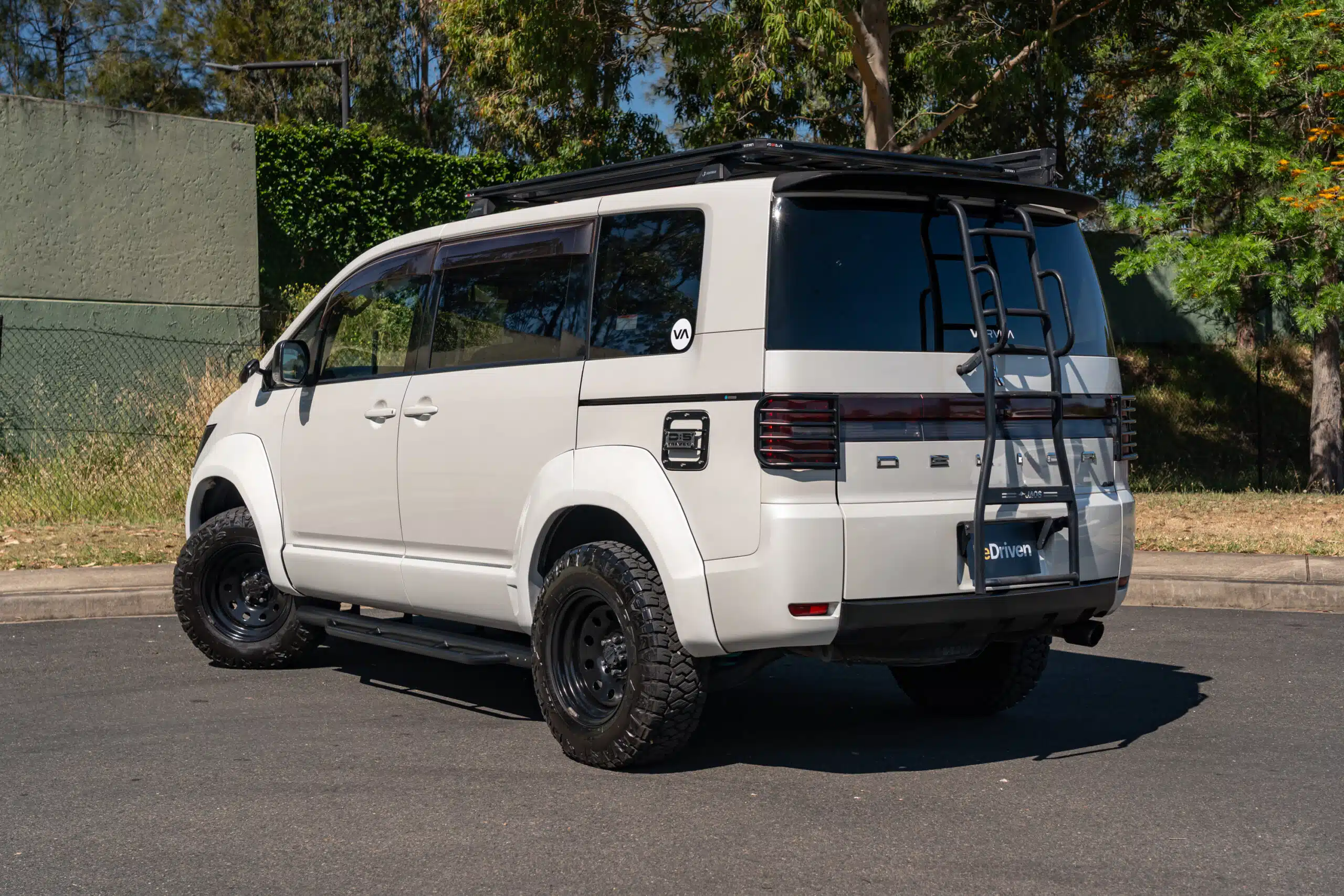
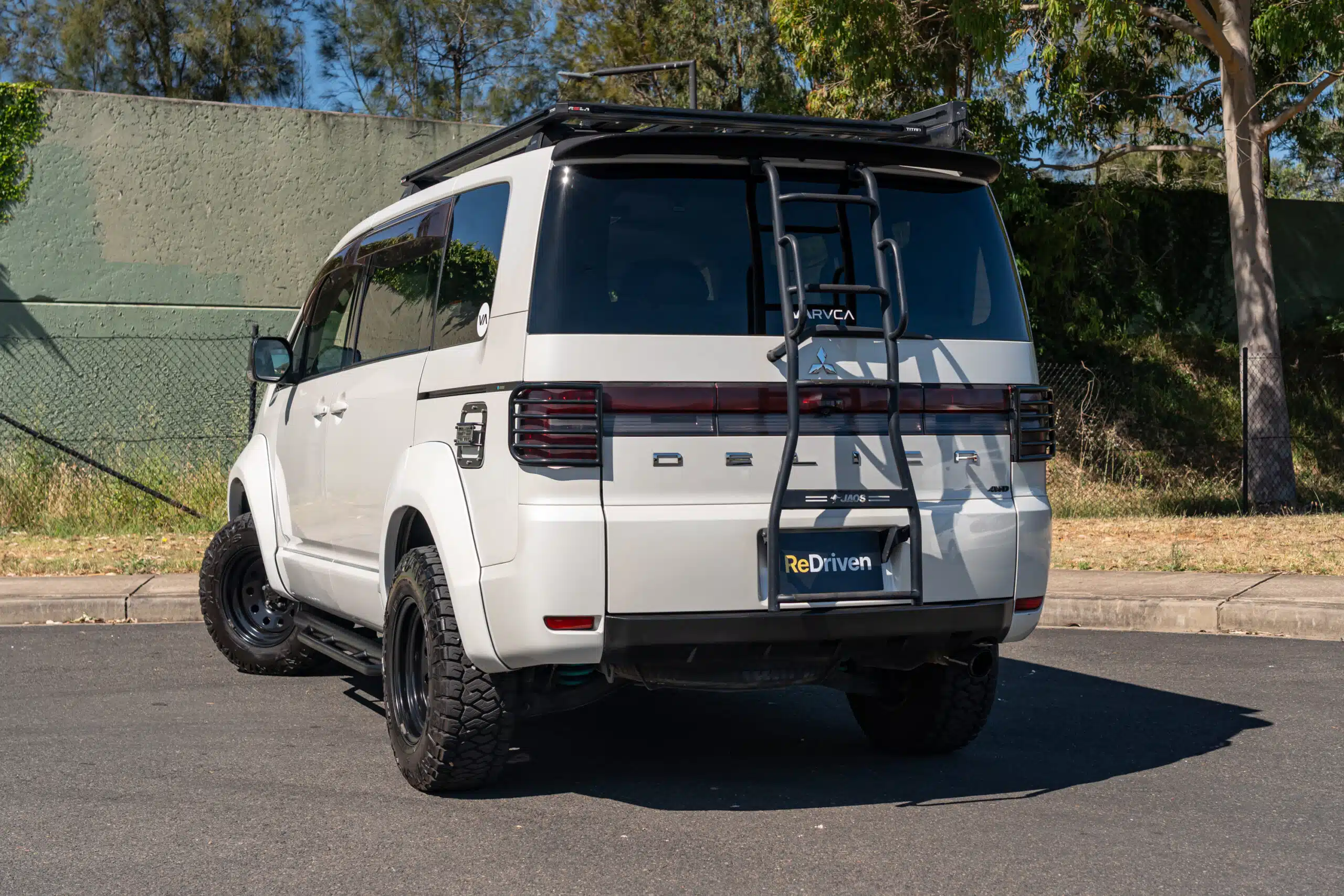
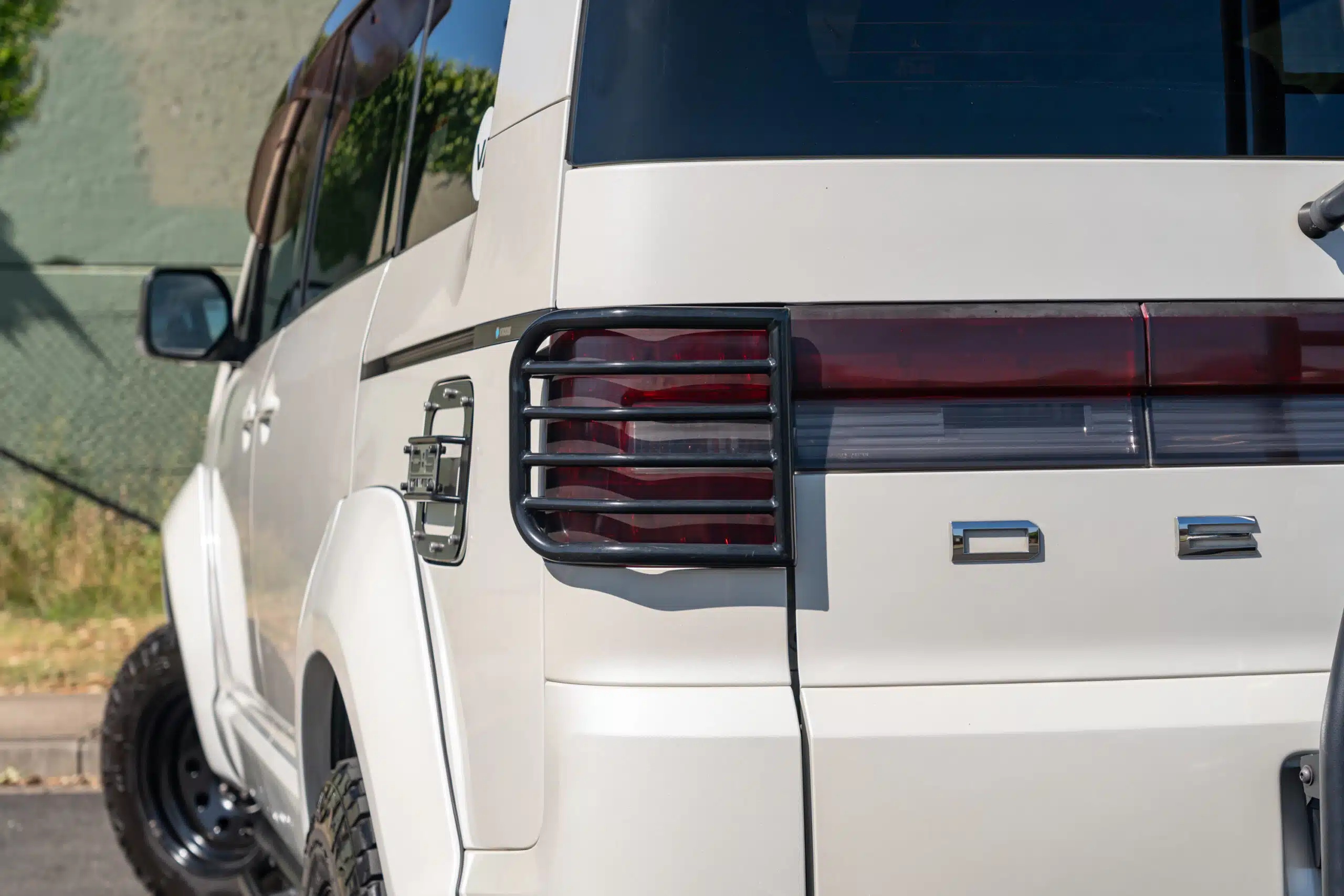
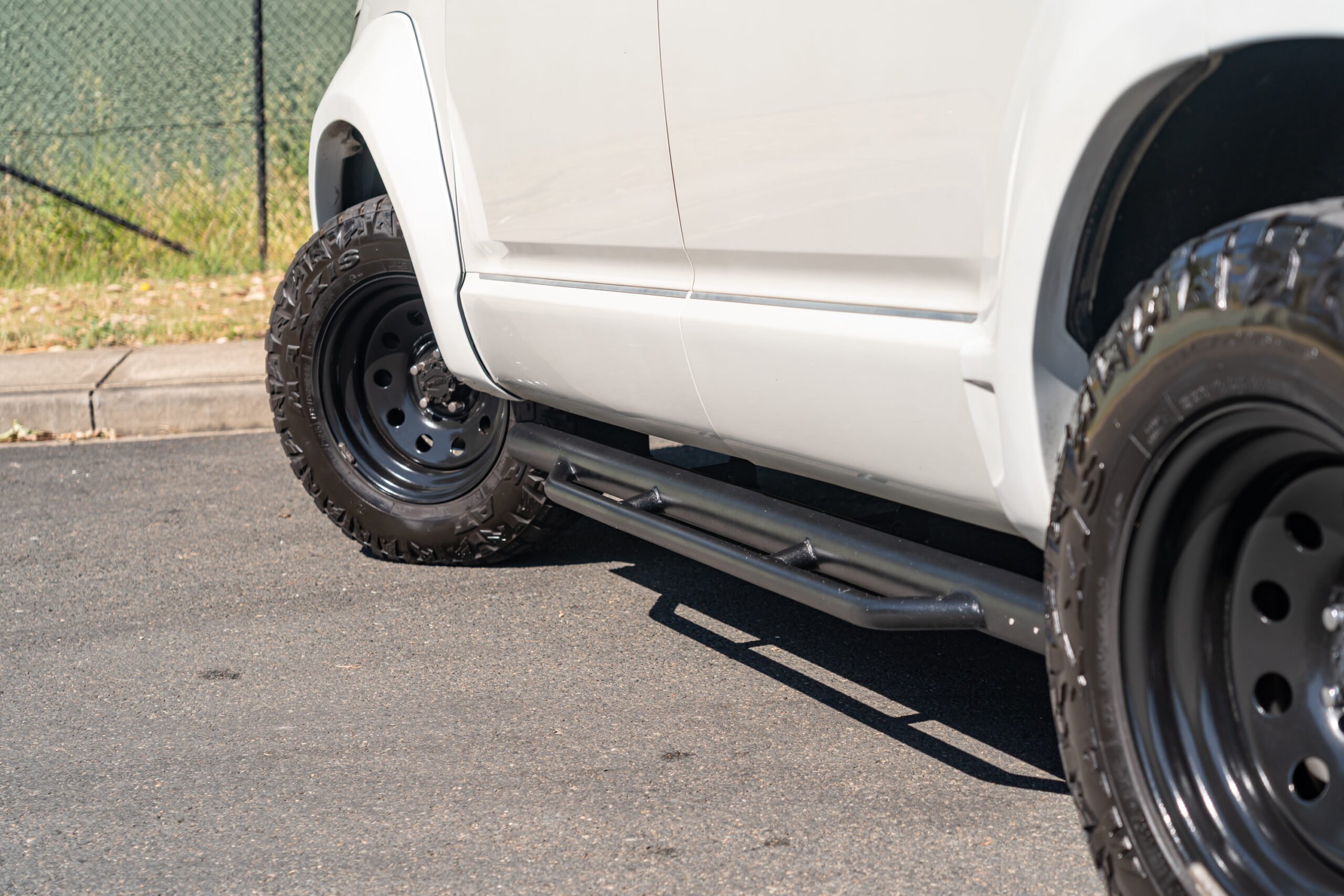
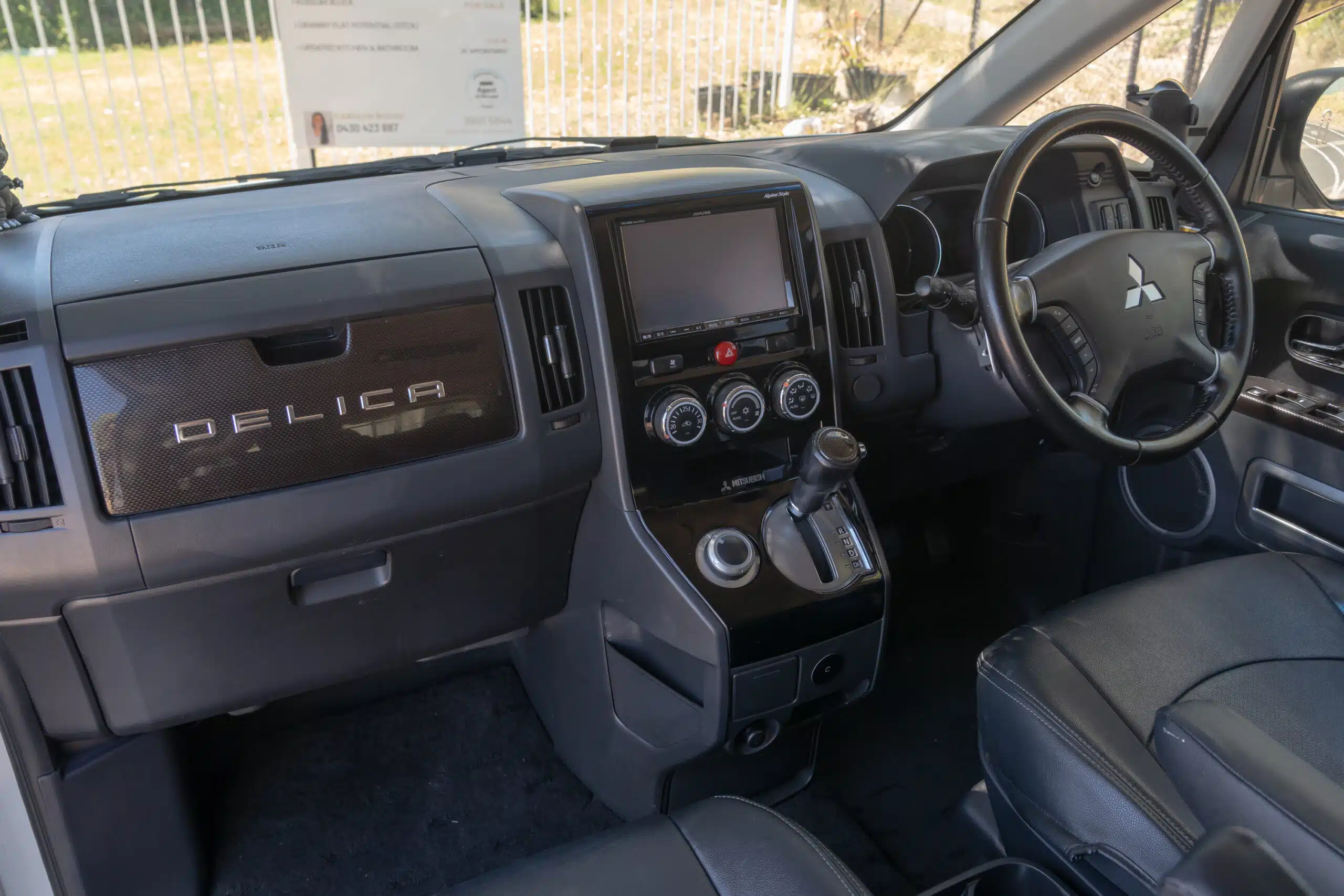
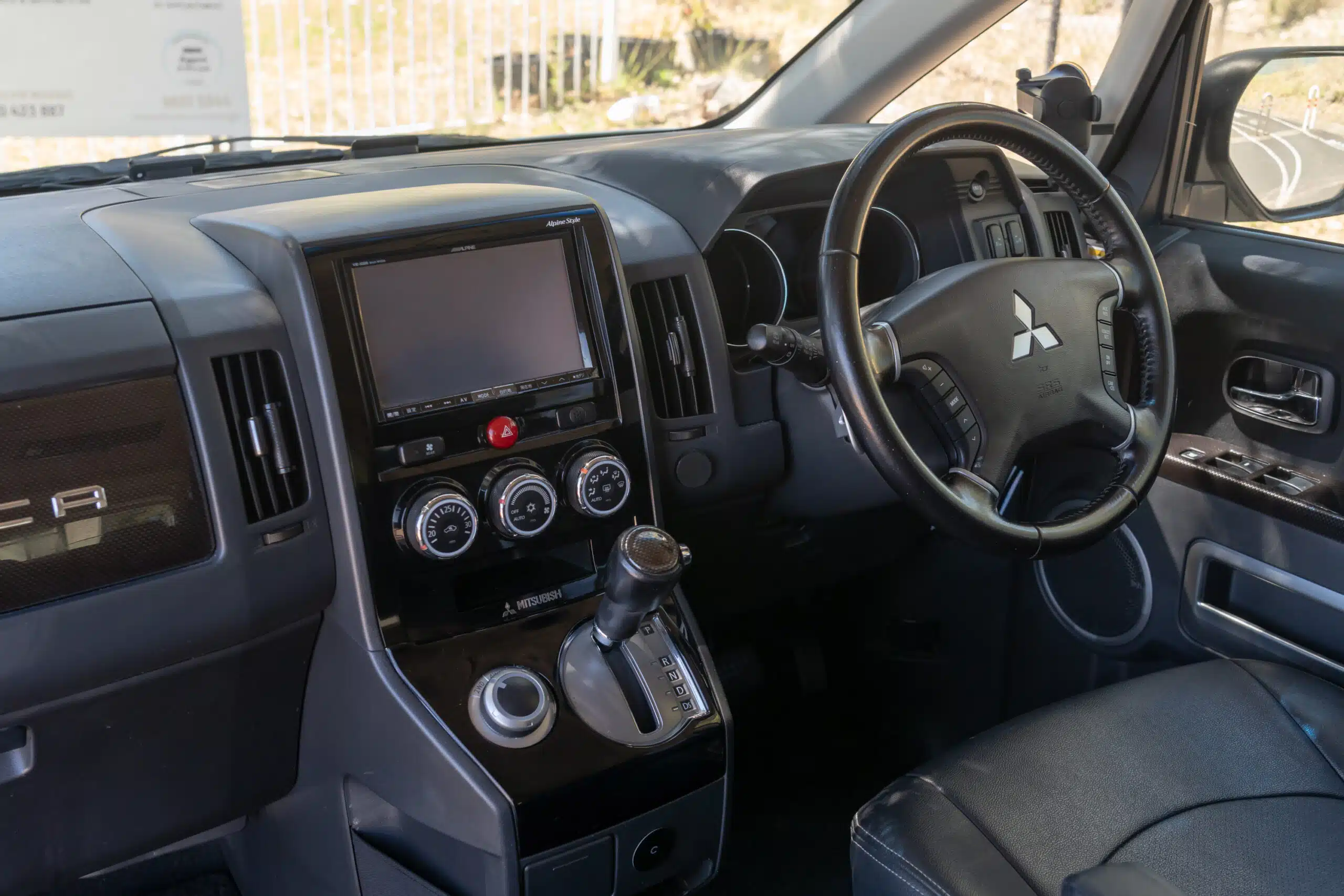
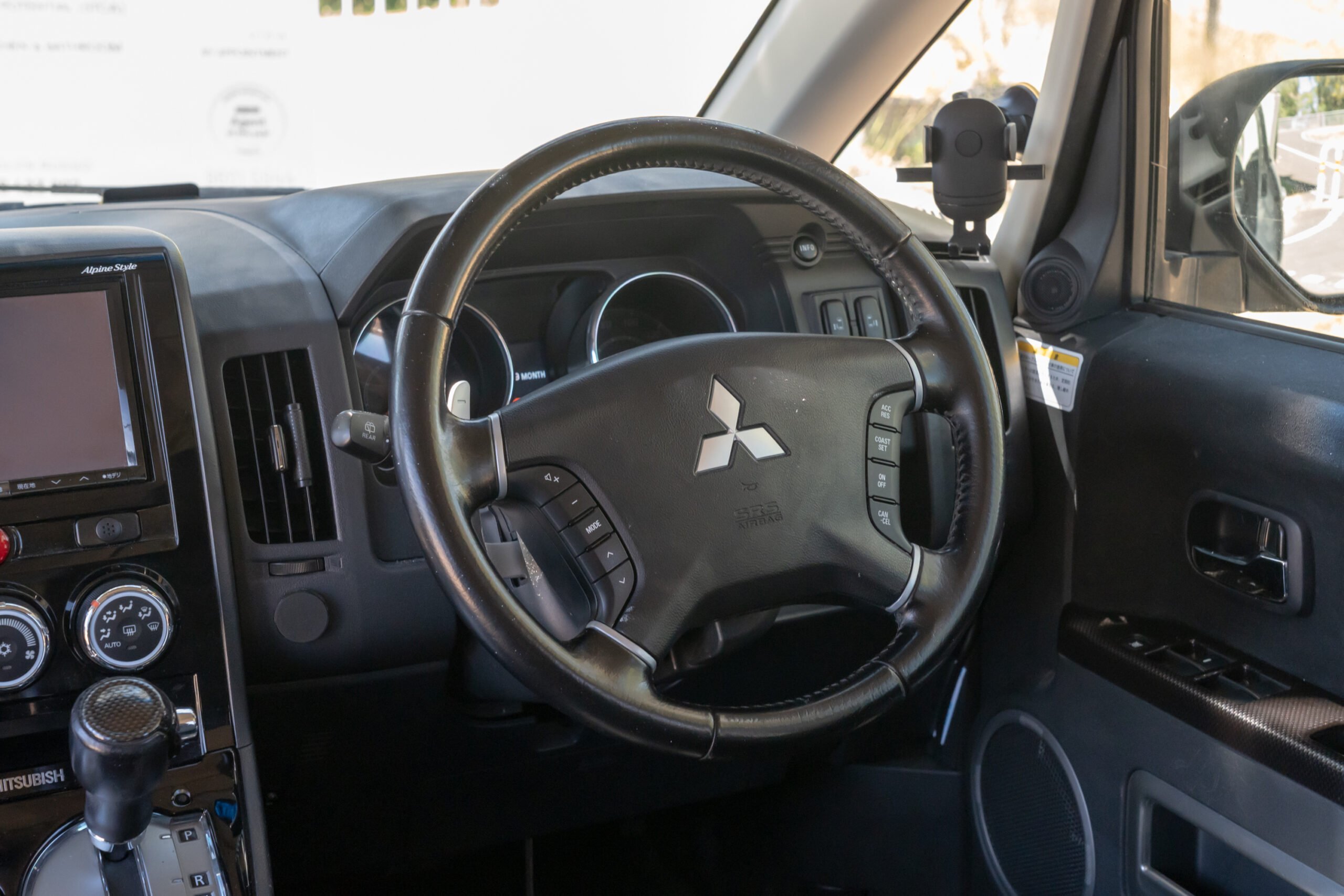
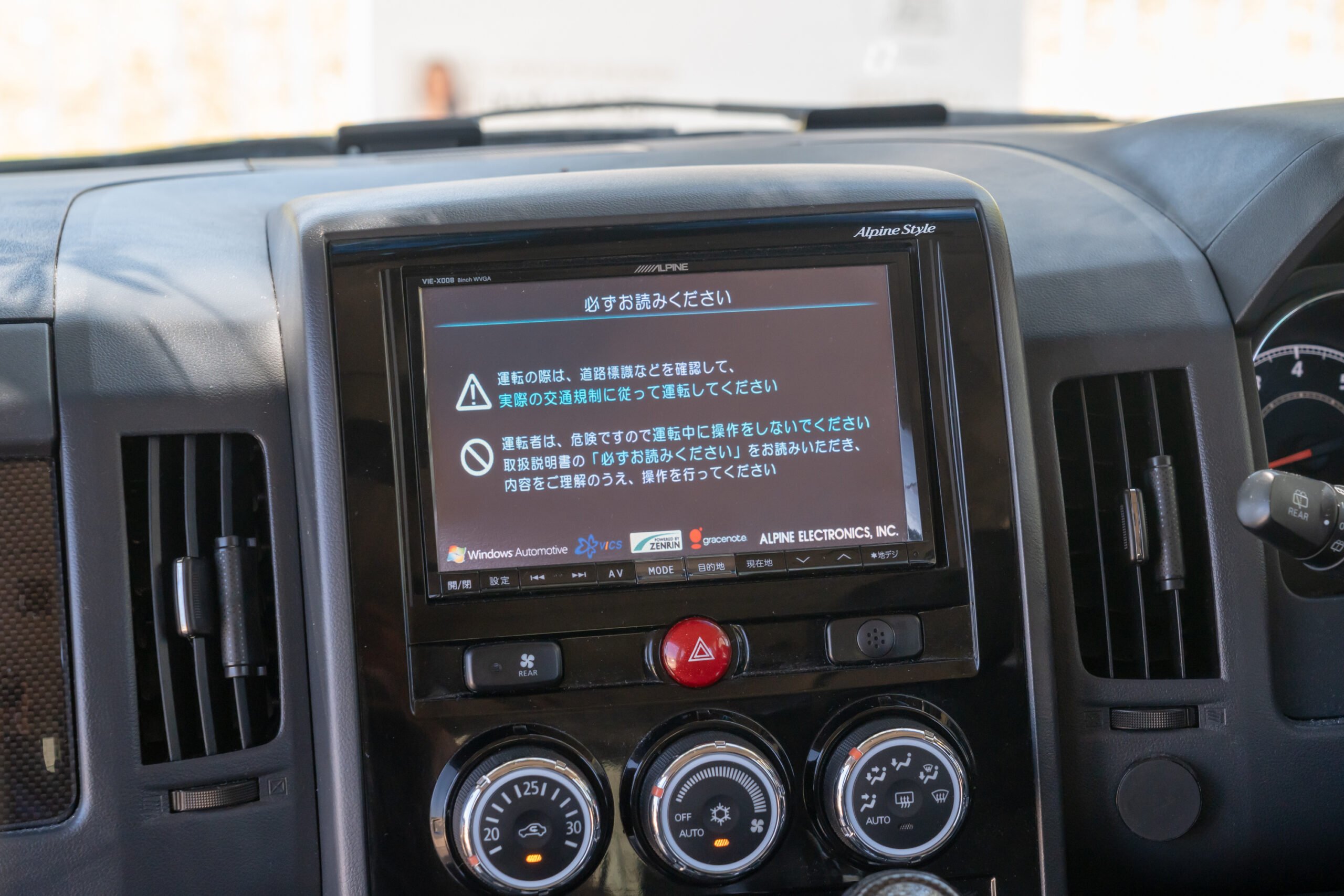
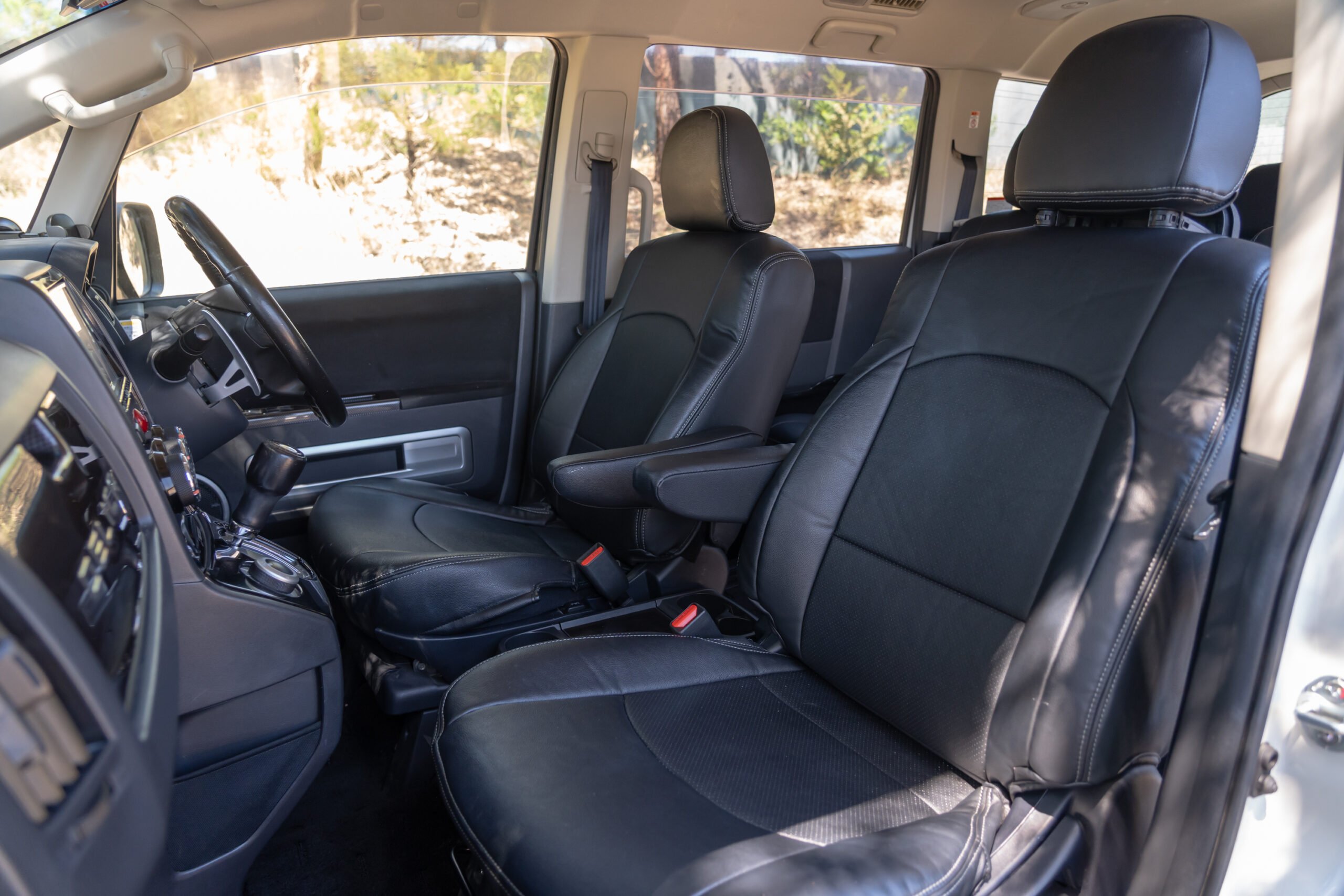














What goes wrong?
Exterior Issues:
Carefully inspect all of the exterior to check for any signs of neglect from previous owners. Minor surface scratches are to be expected, but anything pointing to major accident damage is a clear sign to walk away.
Go over all of the body panels, under the wheel arches, and get underneath to inspect the undercarriage for corrosion or rust. The D5-generation Delica is not as susceptible to rust as its predecessors, but if you’re looking to import one from Japan, especially if it has a history of use in snowy regions like Hokkaido or any excessive use off-road, corrosion is something to look out for.
The headlights on the very early models or lower spec trims usually came with halogen lightbulbs that don’t really hold up well to today’s standards. Thankfully, many owners have changed and recommend updating these to aftermarket LED units, or even retrofitting a higher spec/later model headlight altogether.
Check that the major electrical components all work and function normally – especially the powered rear side doors and, if the one you’re inspecting has these equipped, the power rear tailgate and side door mirrors.
Being a grey import, finding spare parts, body panels, and the like will require some resources outside of your local Mitsubishi dealer – there are plenty of resources online as well as specialist businesses or importers who can help when it comes to things like this.
Given the extra utilitarian character and the fact that most Delica D5s can have a roof rack installed for extra utility, be mindful of weight limitations and what is the legal maximum payload within your region/country – there is some conflicting information on this, but on average, the weight limit for any roof-mounted loads is between 50-75 kilos.
Interior Issues:
Earlier Delica D5 models came with a lot of gloss black plastic sections and a lot of hard, tough-feeling materials, as well as gloss black plastic areas that can be scratched easily. As with any vehicle with excessive plastics, over time, they can become brittle, and this can mean a lot of rattling noises in the cabin, but this doesn’t appear to be a frequent issue from talking with Delica owners – compared to other van-based people movers, rattling noises in the cabin are not as prevalent.
Plus, while the early models did include excessive plastic materials, owners said that this works in the Delica’s favour, as some feel this adds to its overall resilience, and as a result, the pre-update/lower-spec interiors can be very solid.
In post-update models, so 2019 onwards, Mitsubishi significantly improved the build quality and materials of the cabin – so you’re more likely to find softer touch areas, synthetic materials,
Exterior Issues:
Carefully inspect all of the exterior to check for any signs of neglect from previous owners. Minor surface scratches are to be expected, but anything pointing to major accident damage is a clear sign to walk away.
Go over all of the body panels, under the wheel arches, and get underneath to inspect the undercarriage for corrosion or rust. The D5-generation Delica is not as susceptible to rust as its predecessors, but if you’re looking to import one from Japan, especially if it has a history of use in snowy regions like Hokkaido or any excessive use off-road, corrosion is something to look out for.
The headlights on the very early models or lower spec trims usually came with halogen lightbulbs that don’t really hold up well to today’s standards. Thankfully, many owners have changed and recommend updating these to aftermarket LED units, or even retrofitting a higher spec/later model headlight altogether.
Check that the major electrical components all work and function normally – especially the powered rear side doors and, if the one you’re inspecting has these equipped, the power rear tailgate and side door mirrors.
Being a grey import, finding spare parts, body panels, and the like will require some resources outside of your local Mitsubishi dealer – there are plenty of resources online as well as specialist businesses or importers who can help when it comes to things like this.
Given the extra utilitarian character and the fact that most Delica D5s can have a roof rack installed for extra utility, be mindful of weight limitations and what is the legal maximum payload within your region/country – there is some conflicting information on this, but on average, the weight limit for any roof-mounted loads is between 50-75 kilos.
Interior Issues:
Earlier Delica D5 models came with a lot of gloss black plastic sections and a lot of hard, tough-feeling materials, as well as gloss black plastic areas that can be scratched easily. As with any vehicle with excessive plastics, over time, they can become brittle, and this can mean a lot of rattling noises in the cabin, but this doesn’t appear to be a frequent issue from talking with Delica owners – compared to other van-based people movers, rattling noises in the cabin are not as prevalent.
Plus, while the early models did include excessive plastic materials, owners said that this works in the Delica’s favour, as some feel this adds to its overall resilience, and as a result, the pre-update/lower-spec interiors can be very solid.
In post-update models, so 2019 onwards, Mitsubishi significantly improved the build quality and materials of the cabin – so you’re more likely to find softer touch areas, synthetic materials, and a more ‘premium’ feel inside.
Go through all of the seats – front row, second row, and third row to check that the seat upholstery, whether it be cloth or leather, is holding up fine and is still supportive.
In the second and third rear rows, check that the seats all manually fold, recline, and can move about without any issues. More importantly, in certain regions like Australia, the seating setup may be an area you need to confirm is compliant and meets local vehicle regulations – especially on how many passengers it can legally transport.
The infotainment systems can vary depending on the year and trim/spec. On the factory head units, chances are they’ll be in Japanese, and unless you are proficient in the language or skilled with your translator app of choice, they’ll be useless to try to use at all. The later, post-facelift Delica D5s did include an up-to-date infotainment system that does include English within its UI settings, but even so – owners tell us these ‘newer’ systems feel outdated and are not intuitive to use at all by current standards.
Plus, no matter what iteration, these factory headunits can suffer from the usual gremlins you expect with in-car infotainment systems: laggy UIs, unresponsive touchscreens, and inconsistent Bluetooth audio/phone connectivity.
While aftermarket options are available and highly recommended to replace these systems, on certain models – it might not be as straightforward as a ‘plug and play’ solution. Some owners tell us that the infotainment system is also responsible for operating other accessories/powered functions, such as the folding mirrors and surround-view/reversing cameras. In addition, some of these functions may be controlled via the steering wheel buttons and depend on the infotainment system to operate these functions. In other words, do your research if you’re thinking about installing an aftermarket system to confirm it’s compatible and won’t affect any of the functions.
Some Delicas came with a rear seat entertainment system optioned from the factory, or may have had an aftermarket unit installed during its previous life in Japan – if you intend on using it, ensure all of its functions work.
Plus, check that all of the electrical equipment and accessories function normally – items like heated seats, multi-zone climate control, 360-degree surround-view cameras, as well as the active safety tech (adaptive cruise control etc.).
Mechanical issues:
Servicing and maintaining the D5 Mitsubishi Delica can pose some issues, especially if you are looking at a grey market example and your local Mitsubishi dealers or even independent workshops are hesitant to work on them.
But it’s worth remembering that underneath, the Delica shares the same platform/chassis and many mechanical components with the locally-delivered Mitsubishi Outlander SUV, so if you do your homework – you can source plenty of shared mechanical parts that are readily available; and in the case you need to source Delica D5-specific parts, there are plenty of resources online or local grey import-specialists who can help.
Petrol engines:
The four-cylinder petrols are quite robust units: the 2.0L and 2.4L petrol four-cylinders are engines used in various Mitsubishi models for many years and, provided they’ve been well cared for, are quite reliable.
Some areas to look out for are the drive belt tensioner failing – likely due to it wearing on its pivot and causing the belt to run at an angle, which can lead to the bearing on the belt’s pulley wearing down or the belt breaking completely.
One potentially (and quite messy) issue is oil leaking on the outside of the valve cover and internally into spark plug tubes, which can lead to misfires.
Rattling noises caused by regular age/wear of the timing chain can happen, but complete timing chain failures aren’t a widely reported issue.
Coil packs can also fail, mainly from regular age and use.
Diesel engines:
The 2.3L four-cylinder turbo-diesels can suffer from the usual gremlins affecting diesel powertrains.
EGR valve failure can happen, likely due to the electronic actuator failing. In addition, the EGR pipe can crack and cause exhaust leaks.
Being a diesel powerplant, DPF (Diesel Particulate Filter) and regeneration issues are a possibility, but mostly due to a clogged MAP sensor, turbocharger boost leaks, or inlet system issues. It can also happen due to extended periods in between oil changes, the wrong oil being used, or the oil saturation & oil change reset not being done properly.
It’s worth remembering that DPF failure is more likely to happen on those that are subjected to repeated short drives at slow speeds, which doesn’t soot/debris that has collected to clear out fully. To reduce the likelihood of DPF failure and to ensure the regeneration process is done properly, do occasional drives at highway cruising speeds, especially after routine oil changes/maintenance have been performed.
On high mileage examples (more than 150,000km) or those seriously neglected, the injector seals are known to begin leaking, as well as timing chain issues.
Disappointingly, we’ve heard from owners that even though the turbo-diesels are quite potent, they will struggle to tow anything over 1.5 tonnes.
Transmissions:
The continuously variable automatic transmission (CVT) is manufactured by Jatco, and is arguably the Delica’s weakest link (mechanically speaking). The majority of the petrol-powered examples on the used market, especially pre-2019 update models, will have this transmission.
Some issues they can experience include their solenoids & valve bodies, which are usually a cheap fix. However, anything major like replacement chains and pulleys will be more expensive to replace.
If the time comes to require a replacement CVT unit, some owners opt for second hand or refurbished one, but this can be a bit of a risk – and you have to factor in the possibility that the CVT transmission might go out again later down the track.
The root of CVT failures tends to be down to major gaps between service intervals – its recommended to service them every 50,000 km. It won’t make them entirely trouble-free, but it will reduce the likelihood of any serious issues.
If there are any signs it’s slipping, juddering sensations, whining noises, or rougher-than-usual ‘gear’ transitions during kick-down, it’s definitely on its way out or has a serious issue about to come up. Also, as is the nature of CVTs – don’t attempt to tow any cargo loads, even the smallest amount of payloads.
By contrast, the torque converter six or eight-speed automatics are more commonly seen with the diesels, and benefit from being made by Aisin (with a history of application in various commercial/heavy-duty vehicles). They can be quite robust, provided they’ve been regularly serviced.
Occasionally, these can experience issues with their valve bodies, solenoids, and clutches – but not to the point we would consider them serious problems.
For the interest of long-term reliability, we highly recommend targeting a Delica with this type of automatic transmission rather than the CVT.
Drivetrain:
Ensure all of the 4WD modes can be activated smoothly, without any odd sensations or clunking. Any difficulties engaging the modes point to potential drivetrain problems.
It’s also worth mentioning that while the Delica D5 uses a four-wheel drive system from Mitsubishi, this isn’t the same Super Select 4WD system featured in its Pajero-derived predecessors. It still has ‘2WD’ and ‘4WD’ selectable modes, as well as a ‘4WD Central Lock’ setting, but it doesn’t feature a low-range transfer case or lockable rear differentials as standard – something worth keeping in mind if you are considering using the Delica in off-road environments or using it as the basis of an overland build.
The brake vacuum pump can fail and stop vacuuming – oil leaks are a giveaway that it is experiencing some issues.
If the Delica you’re inspecting has modifications of any sort – suspension lift kits, wheels, or anything to improve its standard drivability from standard – ensure they have been installed correctly and are compliant with your local regulations.
Exterior Issues:
Carefully inspect all of the exterior to check for any signs of neglect from previous owners. Minor surface scratches are to be expected, but anything pointing to major accident damage is a clear sign to walk away.
Go over all of the body panels, under the wheel arches, and get underneath to inspect the undercarriage for corrosion or rust. The D5-generation Delica is not as susceptible to rust as its predecessors, but if you’re looking to import one from Japan, especially if it has a history of use in snowy regions like Hokkaido or any excessive use off-road, corrosion is something to look out for.
The headlights on the very early models or lower spec trims usually came with halogen lightbulbs that don’t really hold up well to today’s standards. Thankfully, many owners have changed and recommend updating these to aftermarket LED units, or even retrofitting a higher spec/later model headlight altogether.
Check that the major electrical components all work and function normally – especially the powered rear side doors and, if the one you’re inspecting has these equipped, the power rear tailgate and side door mirrors.
Being a grey import, finding spare parts, body panels, and the like will require some resources outside of your local Mitsubishi dealer – there are plenty of resources online as well as specialist businesses or importers who can help when it comes to things like this.
Given the extra utilitarian character and the fact that most Delica D5s can have a roof rack installed for extra utility, be mindful of weight limitations and what is the legal maximum payload within your region/country – there is some conflicting information on this, but on average, the weight limit for any roof-mounted loads is between 50-75 kilos.
Interior Issues:
Earlier Delica D5 models came with a lot of gloss black plastic sections and a lot of hard, tough-feeling materials, as well as gloss black plastic areas that can be scratched easily. As with any vehicle with excessive plastics, over time, they can become brittle, and this can mean a lot of rattling noises in the cabin, but this doesn’t appear to be a frequent issue from talking with Delica owners – compared to other van-based people movers, rattling noises in the cabin are not as prevalent.
Plus, while the early models did include excessive plastic materials, owners said that this works in the Delica’s favour, as some feel this adds to its overall resilience, and as a result, the pre-update/lower-spec interiors can be very solid.
In post-update models, so 2019 onwards, Mitsubishi significantly improved the build quality and materials of the cabin – so you’re more likely to find softer touch areas, synthetic materials, and a more ‘premium’ feel inside.
Go through all of the seats – front row, second row, and third row to check that the seat upholstery, whether it be cloth or leather, is holding up fine and is still supportive.
In the second and third rear rows, check that the seats all manually fold, recline, and can move about without any issues. More importantly, in certain regions like Australia, the seating setup may be an area you need to confirm is compliant and meets local vehicle regulations – especially on how many passengers it can legally transport.
The infotainment systems can vary depending on the year and trim/spec. On the factory head units, chances are they’ll be in Japanese, and unless you are proficient in the language or skilled with your translator app of choice, they’ll be useless to try to use at all. The later, post-facelift Delica D5s did include an up-to-date infotainment system that does include English within its UI settings, but even so – owners tell us these ‘newer’ systems feel outdated and are not intuitive to use at all by current standards.
Plus, no matter what iteration, these factory headunits can suffer from the usual gremlins you expect with in-car infotainment systems: laggy UIs, unresponsive touchscreens, and inconsistent Bluetooth audio/phone connectivity.
While aftermarket options are available and highly recommended to replace these systems, on certain models – it might not be as straightforward as a ‘plug and play’ solution. Some owners tell us that the infotainment system is also responsible for operating other accessories/powered functions, such as the folding mirrors and surround-view/reversing cameras. In addition, some of these functions may be controlled via the steering wheel buttons and depend on the infotainment system to operate these functions. In other words, do your research if you’re thinking about installing an aftermarket system to confirm it’s compatible and won’t affect any of the functions.
Some Delicas came with a rear seat entertainment system optioned from the factory, or may have had an aftermarket unit installed during its previous life in Japan – if you intend on using it, ensure all of its functions work.
Plus, check that all of the electrical equipment and accessories function normally – items like heated seats, multi-zone climate control, 360-degree surround-view cameras, as well as the active safety tech (adaptive cruise control etc.).
Mechanical issues:
Servicing and maintaining the D5 Mitsubishi Delica can pose some issues, especially if you are looking at a grey market example and your local Mitsubishi dealers or even independent workshops are hesitant to work on them.
But it’s worth remembering that underneath, the Delica shares the same platform/chassis and many mechanical components with the locally-delivered Mitsubishi Outlander SUV, so if you do your homework – you can source plenty of shared mechanical parts that are readily available; and in the case you need to source Delica D5-specific parts, there are plenty of resources online or local grey import-specialists who can help.
Petrol engines:
The four-cylinder petrols are quite robust units: the 2.0L and 2.4L petrol four-cylinders are engines used in various Mitsubishi models for many years and, provided they’ve been well cared for, are quite reliable.
Some areas to look out for are the drive belt tensioner failing – likely due to it wearing on its pivot and causing the belt to run at an angle, which can lead to the bearing on the belt’s pulley wearing down or the belt breaking completely.
One potentially (and quite messy) issue is oil leaking on the outside of the valve cover and internally into spark plug tubes, which can lead to misfires.
Rattling noises caused by regular age/wear of the timing chain can happen, but complete timing chain failures aren’t a widely reported issue.
Coil packs can also fail, mainly from regular age and use.
Diesel engines:
The 2.3L four-cylinder turbo-diesels can suffer from the usual gremlins affecting diesel powertrains.
EGR valve failure can happen, likely due to the electronic actuator failing. In addition, the EGR pipe can crack and cause exhaust leaks.
Being a diesel powerplant, DPF (Diesel Particulate Filter) and regeneration issues are a possibility, but mostly due to a clogged MAP sensor, turbocharger boost leaks, or inlet system issues. It can also happen due to extended periods in between oil changes, the wrong oil being used, or the oil saturation & oil change reset not being done properly.
It’s worth remembering that DPF failure is more likely to happen on those that are subjected to repeated short drives at slow speeds, which doesn’t soot/debris that has collected to clear out fully. To reduce the likelihood of DPF failure and to ensure the regeneration process is done properly, do occasional drives at highway cruising speeds, especially after routine oil changes/maintenance have been performed.
On high mileage examples (more than 150,000km) or those seriously neglected, the injector seals are known to begin leaking, as well as timing chain issues.
Disappointingly, we’ve heard from owners that even though the turbo-diesels are quite potent, they will struggle to tow anything over 1.5 tonnes.
Transmissions:
The continuously variable automatic transmission (CVT) is manufactured by Jatco, and is arguably the Delica’s weakest link (mechanically speaking). The majority of the petrol-powered examples on the used market, especially pre-2019 update models, will have this transmission.
Some issues they can experience include their solenoids & valve bodies, which are usually a cheap fix. However, anything major like replacement chains and pulleys will be more expensive to replace.
If the time comes to require a replacement CVT unit, some owners opt for second hand or refurbished one, but this can be a bit of a risk – and you have to factor in the possibility that the CVT transmission might go out again later down the track.
The root of CVT failures tends to be down to major gaps between service intervals – its recommended to service them every 50,000 km. It won’t make them entirely trouble-free, but it will reduce the likelihood of any serious issues.
If there are any signs it’s slipping, juddering sensations, whining noises, or rougher-than-usual ‘gear’ transitions during kick-down, it’s definitely on its way out or has a serious issue about to come up. Also, as is the nature of CVTs – don’t attempt to tow any cargo loads, even the smallest amount of payloads.
By contrast, the torque converter six or eight-speed automatics are more commonly seen with the diesels, and benefit from being made by Aisin (with a history of application in various commercial/heavy-duty vehicles). They can be quite robust, provided they’ve been regularly serviced.
Occasionally, these can experience issues with their valve bodies, solenoids, and clutches – but not to the point we would consider them serious problems.
For the interest of long-term reliability, we highly recommend targeting a Delica with this type of automatic transmission rather than the CVT.
Drivetrain:
Ensure all of the 4WD modes can be activated smoothly, without any odd sensations or clunking. Any difficulties engaging the modes point to potential drivetrain problems.
It’s also worth mentioning that while the Delica D5 uses a four-wheel drive system from Mitsubishi, this isn’t the same Super Select 4WD system featured in its Pajero-derived predecessors. It still has ‘2WD’ and ‘4WD’ selectable modes, as well as a ‘4WD Central Lock’ setting, but it doesn’t feature a low-range transfer case or lockable rear differentials as standard – something worth keeping in mind if you are considering using the Delica in off-road environments or using it as the basis of an overland build.
The brake vacuum pump can fail and stop vacuuming – oil leaks are a giveaway that it is experiencing some issues.
If the Delica you’re inspecting has modifications of any sort – suspension lift kits, wheels, or anything to improve its standard drivability from standard – ensure they have been installed correctly and are compliant with your local regulations.
Should You Buy One?
Pricing starts from around $9-10,000 for the cheapest examples, and can top out all the way to around $70,000. The best, pre-facelift examples typically begin from $25,000 and post-facelift, mint condition ones will be asking from $60,000.
The cheapest examples available from $10,000 seem attractive on paper, but it’s worth remembering that these are likely the petrol models with the problematic CVT automatic transmissions that will likely come with an expensive bill later in their lives for a replacement unit.
If you must have a petrol Delica D5 and the CVT transmission, make sure it passes a pre-purchase inspection with no serious issues and has an extensive maintenance history.
Our pick for a Delica D5 range would be the newer, post-update diesels, with the cheapest examples starting from $30,000. Most of them are priced at the more premium end, but we argue it’s worth paying extra for the combination of all of the exterior, interior, and running gear updates Mitsubishi introduced for those made post-2019, plus the additional torque and benefits offered by the turbodiesel powerplant, along with the less problematic, torque-converter-based 8-speed automatic transmission.
There are very few people movers/MPVs out there that also bring genuine levels of off-roading abilities as standard, yet don’t feel intimidating to operate. The 4WD or heavy duty variants of the Toyota HiAce, Volkswagen Crafter, and Mercedes-Benz Sprinter are primarily commercial vans converted to people movers that don’t do a lot to hide their roots, which is especially prevalent in how they drive –
Pricing starts from around $9-10,000 for the cheapest examples, and can top out all the way to around $70,000. The best, pre-facelift examples typically begin from $25,000 and post-facelift, mint condition ones will be asking from $60,000.
The cheapest examples available from $10,000 seem attractive on paper, but it’s worth remembering that these are likely the petrol models with the problematic CVT automatic transmissions that will likely come with an expensive bill later in their lives for a replacement unit.
If you must have a petrol Delica D5 and the CVT transmission, make sure it passes a pre-purchase inspection with no serious issues and has an extensive maintenance history.
Our pick for a Delica D5 range would be the newer, post-update diesels, with the cheapest examples starting from $30,000. Most of them are priced at the more premium end, but we argue it’s worth paying extra for the combination of all of the exterior, interior, and running gear updates Mitsubishi introduced for those made post-2019, plus the additional torque and benefits offered by the turbodiesel powerplant, along with the less problematic, torque-converter-based 8-speed automatic transmission.
There are very few people movers/MPVs out there that also bring genuine levels of off-roading abilities as standard, yet don’t feel intimidating to operate. The 4WD or heavy duty variants of the Toyota HiAce, Volkswagen Crafter, and Mercedes-Benz Sprinter are primarily commercial vans converted to people movers that don’t do a lot to hide their roots, which is especially prevalent in how they drive – from their more bouncier suspension and uninspiring body rigidity/stability; in addition to being unpredictable when driving through crosswinds or slippery road conditions.
The Mercedes-Benz V-Class is also a potential rival, but to be honest – it’s just a tradie van wearing a slightly different outfit, with more seats where cargo would normally go in the rear.
The Nissan Elgrand, Toyota Estima (Tarago), Vellfire/Alphard, and Honda Odyssey are fellow Japanese MPVs that can come equipped with 4WD and are based on car-derived platforms, but their 4WD ability is far more basic and best kept to normal, if not slightly slippier road surfaces, such as in the rain. Any attempts to make them suited for rougher environments will require extreme modifications.
Unlike most MPVs or people movers that give the impression that the driver has been relegated to serve as a chauffeur for their kids and family, the Delica is one of the few options that can still serve as a practical mode of transport, but isn’t entirely dull or uninspiring to drive – with its utilitarian character, adventurous styling, and surprising levels of off road ability.
Plus, the Delica benefits from extensive aftermarket support that can transform it into something far above your standard people mover, whether it be overlanding adventures to a mobile home on wheels.
As it is a grey import, ensure you do your homework, especially if you are planning to directly import one from Japan, and only work with reputable agents/businesses throughout the process – ensuring you get one that is compliant to import, passes a clean inspection, and that it can get roadworthy and registered without any issues.
In short, we think the D5-gen Mitsubishi Delica makes for an interesting choice when it comes to family MPVs, and is worth looking into among the standard fare of people carriers in the market today.
Should You Buy One?
Pricing starts from around $9-10,000 for the cheapest examples, and can top out all the way to around $70,000. The best, pre-facelift examples typically begin from $25,000 and post-facelift, mint condition ones will be asking from $60,000.
The cheapest examples available from $10,000 seem attractive on paper, but it’s worth remembering that these are likely the petrol models with the problematic CVT automatic transmissions that will likely come with an expensive bill later in their lives for a replacement unit.
If you must have a petrol Delica D5 and the CVT transmission, make sure it passes a pre-purchase inspection with no serious issues and has an extensive maintenance history.
Our pick for a Delica D5 range would be the newer, post-update diesels, with the cheapest examples starting from $30,000. Most of them are priced at the more premium end, but we argue it’s worth paying extra for the combination of all of the exterior, interior, and running gear updates Mitsubishi introduced for those made post-2019, plus the additional torque and benefits offered by the turbodiesel powerplant, along with the less problematic, torque-converter-based 8-speed automatic transmission.
There are very few people movers/MPVs out there that also bring genuine levels of off-roading abilities as standard, yet don’t feel intimidating to operate. The 4WD or heavy duty variants of the Toyota HiAce, Volkswagen Crafter, and Mercedes-Benz Sprinter are primarily commercial vans converted to people movers that don’t do a lot to hide their roots, which is especially prevalent in how they drive – from their more bouncier suspension and uninspiring body rigidity/stability; in addition to being unpredictable when driving through crosswinds or slippery road conditions.
The Mercedes-Benz V-Class is also a potential rival, but to be honest – it’s just a tradie van wearing a slightly different outfit, with more seats where cargo would normally go in the rear.
The Nissan Elgrand, Toyota Estima (Tarago), Vellfire/Alphard, and Honda Odyssey are fellow Japanese MPVs that can come equipped with 4WD and are based on car-derived platforms, but their 4WD ability is far more basic and best kept to normal, if not slightly slippier road surfaces, such as in the rain. Any attempts to make them suited for rougher environments will require extreme modifications.
Unlike most MPVs or people movers that give the impression that the driver has been relegated to serve as a chauffeur for their kids and family, the Delica is one of the few options that can still serve as a practical mode of transport, but isn’t entirely dull or uninspiring to drive – with its utilitarian character, adventurous styling, and surprising levels of off road ability.
Plus, the Delica benefits from extensive aftermarket support that can transform it into something far above your standard people mover, whether it be overlanding adventures to a mobile home on wheels.
As it is a grey import, ensure you do your homework, especially if you are planning to directly import one from Japan, and only work with reputable agents/businesses throughout the process – ensuring you get one that is compliant to import, passes a clean inspection, and that it can get roadworthy and registered without any issues.
In short, we think the D5-gen Mitsubishi Delica makes for an interesting choice when it comes to family MPVs, and is worth looking into among the standard fare of people carriers in the market today.
Need help with finance?
Buying a used car? Buy a PPSR report first.
Have ultimate peace of mind when buying a used car by purchasing an official PPSR report.



